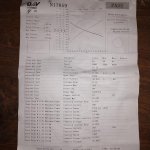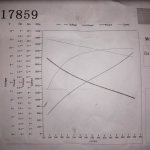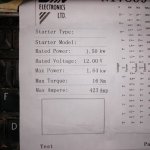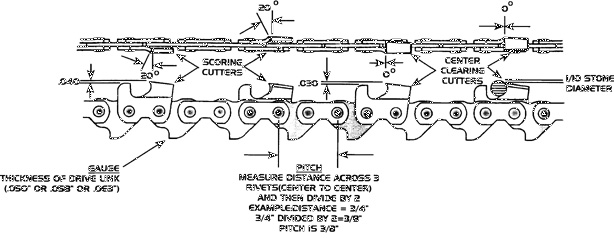Sarcassidy said:
For a while now I've thought that going electric could be a game changer for a few reasons.
Just wondering, how would an electric saw fit in with the current regulations? I'm assuming the current regs limit engine capacity and fuel type, along with many other things.
Would this electric saw be just for fun, or are you looking to start a new category?
I ask because I'm in a similar situation with superkart racing. I'd like to move away from 2-strokes and build an electric superkart, but there are no regs that would allow it to race, currently.
In my understanding, coming up with a competitive design is only half the problem. The other half is developing a solution that could be consistently built for (or by) other competitors, with commonly available parts, easily inspected against a new set of regs, that is competitive with the current running costs. Otherwise you'll be the only one in your new category.
I'll get shot for talking about an ICE on this forum, but anyway, WRT your 2-stroke saw, not sure on the regs (if there are limitations on specific engines or if it's just capacity based), but 250cc single cylinder superkarts are running in the 70+hp range (Gas Gas is leading here atm). The modern 250cc twins run well over 100hp. I run an "old" 2005 Honda RS125 engine and it's pushing close to 50hp at 13k. Dirt bike engines are good for broader power bands, but if you want outright power, you could look into road racing (superkart) engines.
WRT an electric chainsaw:
-An electric motor will be so much smoother than the 2-smoker, you could probably target a higher chain speed (higher rpm, faster cutting) with less chance of throwing chains.
-Targeting to run at higher rpm with electric is a win-win anyway. If you change your mind and decide to slow the motor down, it will produce
more torque. Unlike a tuned 2-stroke which drops out of power band and loses torque if rpm gets too low.
-Suggest looking for a motor that can spin the target rpm without gearing up. Gearing means losses in efficiency. But more importantly, faster spinning motors make more power with less weight than slower torquier motors (speed~power).
-You don't actually need a "60hp" electric motor. Your requirements are unique: being very short duration. A much lower power electric motor can produce much higher power levels for short durations. It would depend on the motor, but you might be able to get a 15hp motor make 60hp for 6 seconds without cooking (just pulling random numbers, but you get what I mean). Petrol engines are rated for the maximum power they can output. A 60hp engine can only flow so much air and fuel. You need to modify something to flow more and make more power. But electric motors are (inconsistently) rated based on how much power they can output continuously without overheating. But they can easily put out much higher power for shorter durations just by pumping more current. No modification necessary. Similar situation with batteries and controllers to a certain extent. It's all about heat production/transfer and temperature limits.





